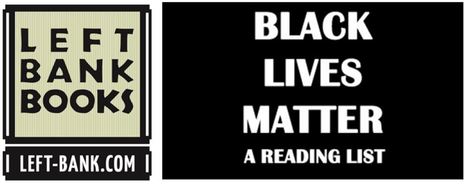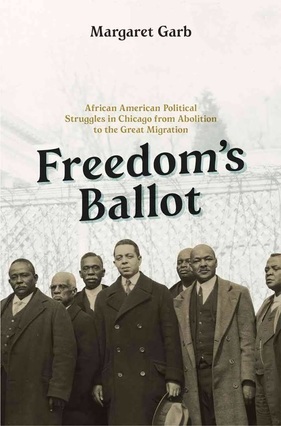Reading List
Left Bank Books
|
Black Lives matter - a reading List
"This is a community curated list of books, poems, articles and blog posts that explore race, not only in St. Louis, but America as a whole. By no means a full comprehensive list, here are a few to get you started on the trail of understanding what's happening." |
$2.00 a Day: Living on Almost Nothing in America
Kathryn J. Edin and H. Luke Shaefer
|
After two decades of brilliant research on American poverty, Kathryn Edin noticed something she hadn’t seen since the mid-1990s — households surviving on virtually no income. Edin teamed with Luke Shaefer, an expert on calculating incomes of the poor, to discover that the number of American families living on $2.00 per person, per day, has skyrocketed to 1.5 million American households, including about 3 million children.
Where do these families live? How did they get so desperately poor? Edin has “turned sociology upside down” (Mother Jones) with her procurement of rich — and truthful — interviews. Through the book’s many compelling profiles, moving and startling answers emerge. The authors illuminate a troubling trend: a low-wage labor market that increasingly fails to deliver a living wage, and a growing but hidden landscape of survival strategies among America’s extreme poor. More than a powerful exposé, $2.00 a Day delivers new evidence and new ideas to our national debate on income inequality. |
Freedom's Ballot: African American Political Struggles in Chicago from Abolition to the Great Migration
Margaret Garb
|
In the spring of 1915, Chicagoans elected the city’s first black alderman, Oscar De Priest. In a city where African Americans made up less than five percent of the voting population, and in a nation that dismissed and denied black political participation, De Priest’s victory was astonishing. It did not, however, surprise the unruly group of black activists who had been working for several decades to win representation on the city council.
Freedom’s Ballot is the history of three generations of African American activists—the ministers, professionals, labor leaders, clubwomen, and entrepreneurs—who transformed twentieth-century urban politics. This is a complex and important story of how black political power was institutionalized in Chicago in the half-century following the Civil War. Margaret Garb explores the social and political fabric of Chicago, revealing how the physical makeup of the city was shaped by both political corruption and racial empowerment—in ways that can still be seen and felt today. |
City of American Dreams: A History of Home Ownership and Housing Reform in Chicago, 1871-1919
Margaret Garb
|
In this vivid portrait of life in Chicago in the fifty years after the Civil War, Margaret Garb traces the history of the American celebration of home ownership. As the nation moved from an agrarian to an industrialized urban society, the competing visions of capitalists, reformers, and immigrants turned the urban landscape into a testing ground for American values. Neither a natural progression nor an inevitable outcome, the ideal of home ownership emerged from the struggles of industrializing cities. Garb skillfully narrates these struggles, showing how the American infatuation with home ownership left the nation's cities sharply divided along class and racial lines.
Based on research of real estate markets, housing and health reform, and ordinary homeowners—African American and white, affluent and working class--City of American Dreams provides a richly detailed picture of life in one of America's great urban centers. Garb shows that the pursuit of a single-family house set on a tidy yard, commonly seen as the very essence of the American dream, resulted from clashes of interests and decades of struggle. |
Color Matters: Skin Tone Bias and the Myth of a Postracial America
Kimberly Jade Norwood
|
In the United States, as in many parts of the world, people are discriminated against based on the color of their skin. This type of skin tone bias, or colorism, is both related to and distinct from discrimination on the basis of race, with which it is often conflated. Preferential treatment of lighter skin tones over darker occurs within racial and ethnic groups as well as between them. While America has made progress in issues of race over the past decades, discrimination on the basis of color continues to be a constant and often unremarked part of life.
In Color Matters, Kimberly Jade Norwood has collected the most up-to-date research on this insidious form of discrimination, including perspectives from the disciplines of history, law, sociology, and psychology. Anchored with historical chapters that show how the influence and legacy of slavery have shaped the treatment of skin color in American society, the contributors to this volume bring to light the ways in which colorism affects us all--influencing what we wear, who we see on television, and even which child we might pick to adopt. Sure to be an eye-opening collection for anyone curious about how race and color continue to affect society, Color Matters provides students of race in America with wide-ranging overview of a crucial topic. |





